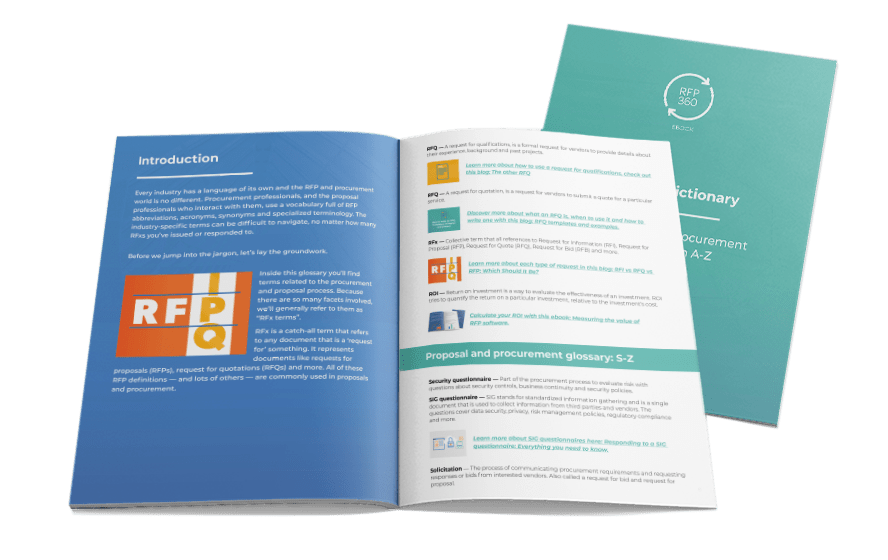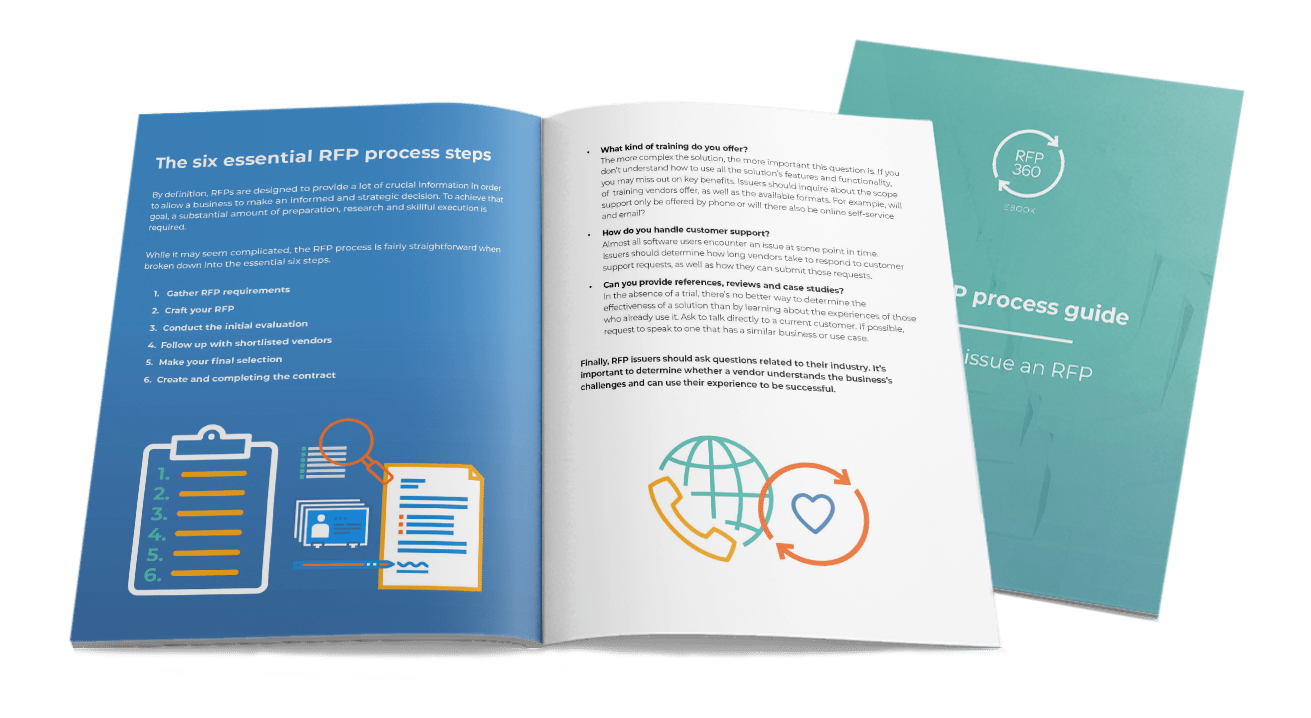Every modern business relies on technology to operate. Accordingly, IT procurement is an important part of success. From the computer you’re using to read this blog to the applications you use to manage your work, IT procurement is behind it all.
Buying software and technology is a high stakes proposition. Get it right — you’re a hero and your company benefits. But, if you get it wrong, you’ll face lost revenue, decreased productivity and frustrated users. Vetting these purchases is mission-critical for many organizations.
From small department point solutions systems to larger organization-wide systems, it’s important to thoughtfully consider each IT purchase. Fortunately, IT procurement creates a consistent process that enables your organization to maximize value, reduce cost and manage vendor risk.
In this blog, we’ll explore IT procurement. To start, we’ll build a foundation and focus on the basics including key definitions and background. Next, we’ll offer a how-to guide for your next IT procurement project. Finally, we’ll share a few tips and real-world examples of IT procurement to help you understand how it works in practice.
- The basics: What is IT procurement?
- How to start an IT procurement project
- IT procurement tips and resources
The basics: What is IT procurement?
IT procurement definition
Information technology (IT) procurement is the process used to select, purchase and implement technology within an organization. Sometimes referred to as IT purchasing, technology procurement or software procurement, the goal of IT procurement is to ensure that the technology assets align with the organization’s goals. Purchasing software, hardware or IT services would all be considered IT procurement. Accordingly, IT category managers manage a variety of tactical and strategic purchases.
Ideally, IT procurement ensures your business’s technology stack is as cohesive, efficient and effective as possible. The scope of IT purchases varies. Some IT purchases are departmental, ad hoc and low cost, while others are holistic, highly-impactful and represent a significant business investment. Regardless of the size of the purchase, technology procurement focuses on defining a need, identifying the right solution, managing the purchase and ensuring contractual fulfillment.
In procurement, there are a lot of acronyms and industry-specific vocabulary. If you’re new to the field, or just want to brush up, you may find this RFX glossary helpful.

The importance of IT procurement
A recent study indicates that every department within an average business uses 40-60 applications. And, an organization as a whole uses an average of around 200 applications. Consequently, hardware and software represent a large spend category in most businesses. Unfortunately, the IT category is one of the most challenging when it comes to spend visibility.
Due to the wide accessibility of solutions, rogue IT is common. Rogue IT is any solution used by an employee that hasn’t been approved or vetted by the IT team. Typically, rogue IT and maverick spend go hand in hand. Unfortunately, unmanaged IT spend significantly increases risk to your organization. This risk may come to fruition in the form of unapproved integrations, process inefficiency, siloed data or even a data breach.
Additionally, if proper procurement processes aren’t followed, you may end up with software that has low adoption rates or goes entirely unused. Indeed, this issue is shockingly common with one study reporting that 37 percent of software is unused. That software is estimated to cost companies $259 per employee, per year.
Jobs in IT procurement
IT procurement positions are usually part of the larger procurement department. However, they may instead be considered part of the IT department. Either way, professionals in these positions tend to have a similar skill set to procurement managers. Titles included in the field include IT procurement manager, IT procurement specialist, technology procurement analyst and so on.
There are so many complex considerations when it comes to IT procurement. In addition to the questions about functionality and user experience, you must also understand how each solution interacts with the company’s data and systems. Consequently, people with technology knowledge as well as purchasing expertise thrive in these roles.
IT procurement manager duties and skills
- Market research
- Procurement negotiation
- Contract management
- Supplier relationship management
- Data security and risk evaluation
- Stakeholder discovery and scope definition
- Systems integration expertise
How to start an IT procurement project
The overall IT procurement process is similar to other strategic sourcing processes. Generally, the buyer will gather information and evaluate prospective vendors by issuing a request for proposal (RFP). Though, depending on your needs, you may also use a different RFX altogether.
For example, if your organization has identified a problem, but isn’t sure how to solve it, a request for information (RFI) is a good place to start. On the other hand, if you’re looking for an IT consultant for a specific project, you may want to use a request for qualifications (RFQ). Or, if you’re looking to buy a dozen new laptops with a particular set of specs, a request for quotation (RFQ) may be in order.
Regardless of the specifics of your need, the process includes three steps. First, identify and understand the need. Second, issue your vendor information request. Third, select a vendor and make a purchase. While additional steps like vendor risk assessments and vendor performance evaluations are regularly required after executing a contract to maximize ROI, this how-to guide will focus on an overview of the IT sourcing process.
1. RFP research and creation
A stakeholder from marketing approaches procurement and needs a new collaboration tool. Before jumping in to issuing an RFP or cutting a check, IT procurement does some leg work. Generally, this includes:
- Holding stakeholder interviews to help define and understand the need
- Exploring the current technology stack to see if an existing tool can fill the need
- Conducting market research to establish project scope and identify prospective vendors
- Writing an RFP that details project background, scope, technical requirements and RFP questions
2. Issue and manage the RFP
You’ve established project scope and written a thoughtful RFP for the collaboration solution for the marketing team. Now, you issue and manage the RFP by:
- Creating a list of prospective vendors and send the RFP
- Gather any follow up questions or requests for additional information
- Answer vendor questions and provide context as needed
- Monitor responses and send follow up reminders as the RFP timeline progresses
3. Vendor scoring, evaluation and selection
Now, you’re in the home stretch. Ideally, you have at least three proposals from qualified vendors. Select the right vendor by:
- Reviewing proposals for high-level compliance
- Engaging stakeholders to score functionality, customer success and implementation sections
- Assign SMEs from IT to score technical requirements and integrations sections
- Calculate weighted scores to prioritize your most important decision factors
- Compare the scores to see if you have a clear winner
- If yes, move on to negotiation and contracting
- If no, narrow your selection to finalists and request additional information, demos or presentations
Naturally, this is an abbreviated overview of the RFP process. If you’re interested in learning more, check out this ebook: The RFP process guide.

IT procurement tips and resources
3 key tips for successful technology procurement
1. Benchmark before you purchase
Calculating ROI is crucial to understanding the value of your IT procurement program. But, to do that, you must first understand how the solution will impact the team and how to measure success. That all starts with benchmarking your current, pre-solution state.
2. Use technology for the RFP process
IT purchasing is complex. You have to ask a ton of quantitative and qualitative questions and then be able to score and evaluate the answers objectively. If you’re using Word, spreadsheets and emails to do the job, you’re wasting time. RFP management software simplifies, centralizes and automates the process, cutting the RFP timeline by up to 50 percent.
3. Prioritize integration and data
The rate of technology adoption has increased exponentially over the years. Indeed, it’s impacted almost every department in every industry. And, it’s not stopping any time soon. As organizations increasingly adopt technology, the importance of integration and data capture also increases. Organizations that avoid siloed solutions will end up with powerful data that can be leveraged in increasingly dynamic and strategic ways.
Resources for IT procurement
Naturally, we can’t cover every aspect of IT procurement in a single blog. So, if you’re still looking for more information, here are some resources to help you dig deeper and learn even more about IT procurement
- IT procurement process flow chart – Lucidchart
- NPI – IT procurement consultant blog for news, trends and insight
- G2 software analyst site for research and reviews
- IT procurement guide example: University of Wisconsin
- Sample IT procurement coordinator job description – MA Convention Center Authority
- IT RFP examples – Find RFP
- RFP template – IT managed service provider – Resultant
- IT managed services RFP example – Buffalo County



